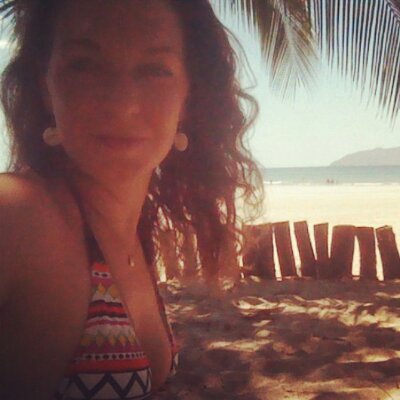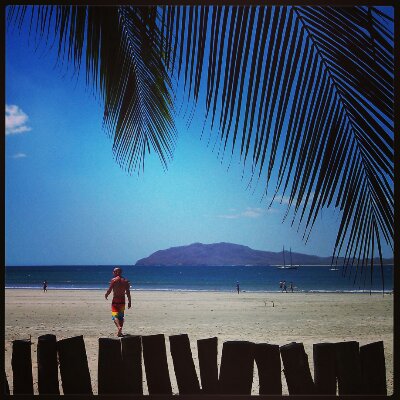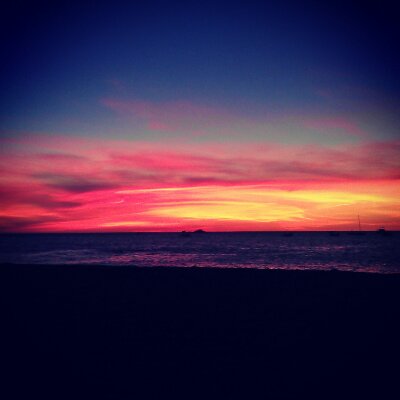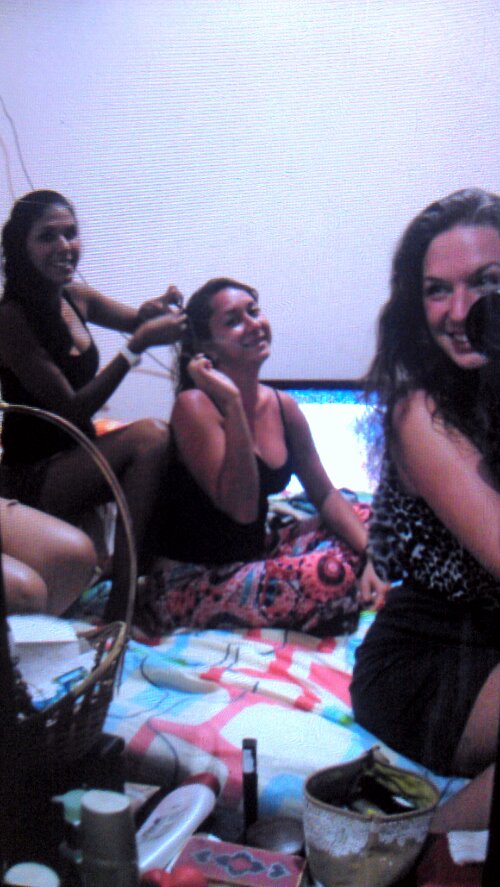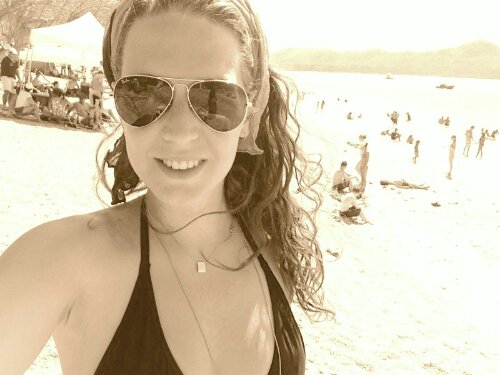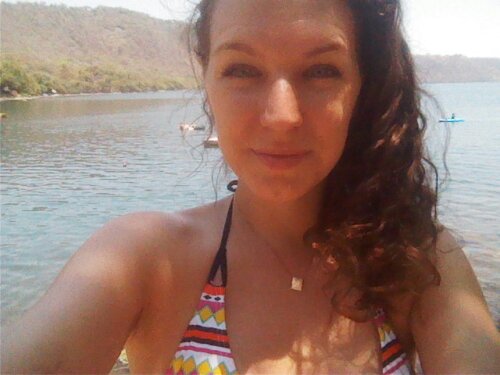Nicoya
.
Buying cash
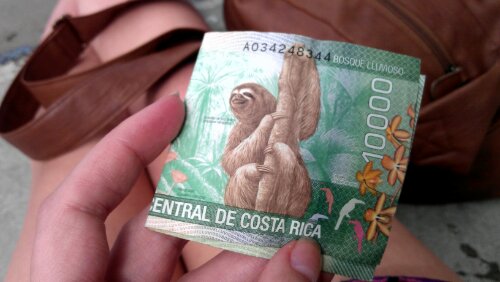
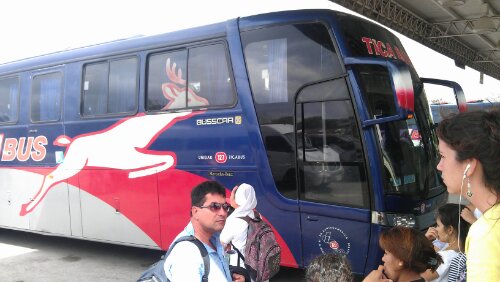

On the border with Costa Rica, waiting patiently for the bus drivers to come back with our passports.
Currency exchange people are walking around trying to sell Costa Rican colones. Official and ackredited vendors, proudly showing off their id badges.. so I think now is the perfect time to properly introduce you to one of my favourite apps: XE currency.
It shows the exchange rate between the currencies of your choice, has them all, and is extremely convenient in situations like this.. when you simply have no idea what the exchange rate is. Or when, as in my case, you’re simply not much of a number person.
Going out of my 3g range now so – ciao!
One more salsa for the road

“Let’s go to Fandango and dance!”
“But I’m travelling early tomorrow, I should just pack and sleep..”
3 minutes later:
“Let’s go. Give me 20 minutes.”
Sleep is only applicable when you don’t have the option to dance. And I even got back home early enough to pack and sleep!
Thanks for all the “vueltas”!
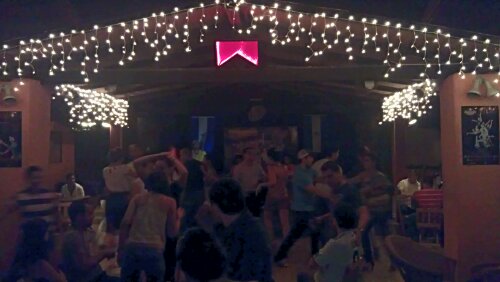
Fandango is a nice and intimate salsa place here in Managua where professionals gather to practice their spins and turns in their vicious little high heeled shoes that my feet just love to get in the way of. And then there’s normal people like me, who just try their best to follow the music and not loose their balance while getting.distracted by the overwhelming amount of arms everywhere, turning, spinning, behind heads, behind waists, around heads, up in the air, spin, spin, spin!
The bachata is far more friendly with its sexy little “one, two, three, pop!” – and if you don’t want to dance, you can just enjoy the show, it’s really beautiful to watch these people dance and to see their different styles.
Okay, little backpack ready. Costa Rica!
– Forgot to mention the feeling I had the other day when walking with a friend on our way to the club at 22 in the evening. Just like now, I was wearing shorts. And a simple top. And the breeze was so warm! Everybody here keeps complaining about the heat, and yes, you do sweat a lot. But I still don’t get it, what’s not to love about not having to be cold?! I’m very happy.
Safety in Managua, and earthquake panic.

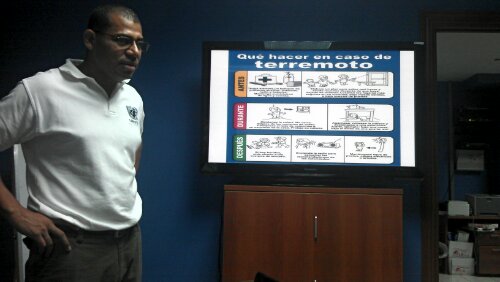
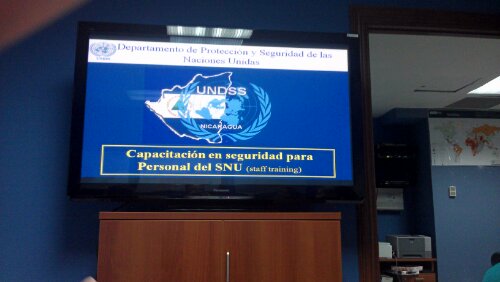
A couple of days ago, I participated in a UN security staff training with the UNDSS here in Managua. We spoke about the security management system, about how to avoid danger, about how to plan field travels and my favourite part – the little tips and advice that one does not necessarily think of in the first place but that might prove to be essential for one’s safety and survival.
Before working for the UN in the field, one must complete the two online courses of Basic and Advanced Security in the Field. They are very informative and include recommendations on how to negotiate with kidnappers, identify land-mines, and navigate using the stars, to more every-day recommendations on which room to choose in a hotel and how to be culturally sensitive.
Once on site, the UN Department of Safety and Security usually arranges a training session focused on issues especially relevant to the duty station. In our case, Managua is a considerably dangerous city where armed robbery and assault is common, especially in taxis.
Best advice of the day: Always look for the handles on the inside of the door before entering a taxi, they are often removed to prepare for robbery.
Secondly, and maybe the most informative part the training: Nicaragua is the third most vulnerable country in the world to climate risks. And in this case, we’re talking massive earthquakes and volcano eruptions.
One of my first encounters with the earthquake panic was when seeing the “Back in when parking” signs on some parking lots. This is to allow for faster evacuation in case of an earthquake. And the tremors are common. “It’s trembling all the time here in Managua, you are just not feeling it because it’s so deep down and not strong enough.” All staff have a kit with a helmet, glasses, gloves, a facemask and a whistle on our desks in the office despite the UN building supposedly having an anti seismic construction. Earthquakes are a serious deal here.
About 41 years ago, on the day before Christmas, Managua went from being the liveliest capital of Central America to suddenly becoming a ruin leveled to the ground. Half of the city’s population was left without a home, and Managua residents moved to areas outside of the core of the city. To this date, the 6.3 magnitude earthquake from 1972 is the reason to why there is no defined city center in Managua, to why taxis navigate using landmarks instead of street names and to why people are so afraid of tremors and keep talking about the “triangle of life”. 10,000 people were killed that year.
Managua is situated on several so called “active fault lines” and has been completely destroyed more than once. It was previously hit by strong earthquakes in 1885 and 1931, which sums up into a pattern of monstrous earthquakes every 40-43 years.
Did I mention the last big one was in 1972?
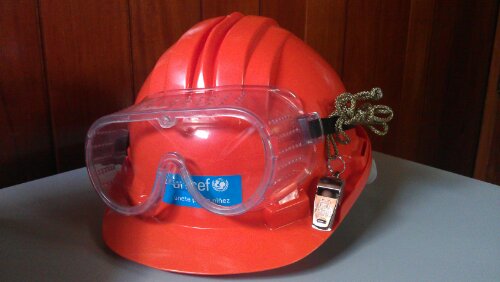
The “Triangle of Life” is a theory proposing that the most likely way to survive an earthquake is by seeking shelter next to a strong and stable object, the empty space created next to it as walls and structure fall is referred to as the “triangle of life.” Doorways are, as opposed to common belief, not a safe place – as they no longer serve to hold up the structure in modern buildings.
If feasible, get out as soon as possible. If not, jump down and in under your desk. And keep calm. With your helmet.
Forever Sunrise – Mozambique 2012
My time in Mozambique was packed with positive energy, dancing and laughter that wouldn’t stop before the morning had come. The rising sun was an ever-present dancing companion and my Mozambican friends were truly happy, full of life and beautiful. Sunrise is what forever will remind me of this magnificent country and its people. Thank you, all. Lengoma!
